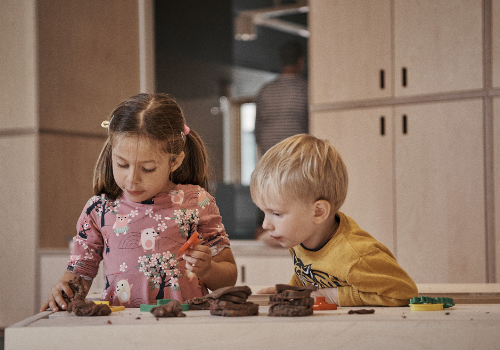How to take a holistic approach to early education?

If you've read our other articles about the holistic approach to ECE, you may now be wondering how you could implement holistic practices in your own classroom. In this article, we'd like to offer a few easy tips for you to use!
If you do try out these tips, keep in mind that it always takes a while to try out something completely new, and that it's okay to make mistakes! It's better to make small, gradual changes than to try to change everything overnight.
1: Encourage children to ask questions and answer them when they do
Curiosity is natural for children and a typical way they show this is by asking questions. Allowing them to be curious about all kinds of things regardless of if they are relevant to the curriculum is one way of implementing a holistic approach. It's important to keep in mind that the human brain is a very complex system and even if something doesn't seem immediately relevant, that information will eventually be combined with other small pieces of information and build the child's understanding of the world. Refrain from giving the answer too easily though! It is more rewarding for the child if they get to search for the answer a bit. It is also completely fine if you can't provide the answer right away; you can then search for the answer together with the child through discussion and experimentation!
2: Refrain from inserting yourself in the children's interactions too much
Much like adults, children also have their own society with its own rules and practices. While it's important to break up a fight so nobody gets hurt, refrain from inserting yourself in children's respective discussions, negotiations and group play. By interacting with each other, the children learn boundaries - both their own and others' - and form relationships, both of which are incredibly crucial from a developmental standpoint.
3: Don't try to control the child's emotions
An important factor of holistic development is social-emotional development, which includes the feeling and expression of emotions, both positive and negative. Instead of trying to control children's responses by for example telling them to stop crying, allow them their moment of sadness or frustration and instead discuss with them why they're feeling that way. Sometimes children don't have the words to describe their feelings, and that is alright - it's why we have tools like pictograms, the feel-o-meter to help them communicate those feelings!
Did you know that we cover social-emotional development and regulating emotions thoroughly in our Diploma program, along with practical assignments?
4: Don't "fix" finished assignments and projects
A key point of the holistic approach is to observe and respect the uniqueness of each child. This extends also to their respective creative productions. Try not to "fix" a child's arts or crafts project once the child has deemed it done. Those projects are an important source of information for evaluating the child's development, as well as precious memories of a time of that child's life that passes in the blink of an eye.
5: Provide the children chances for physical activity
A healthy mind resides in a healthy body, and ensuring that children get enough physical activity is extremely important for their wellbeing. You can enhance the children's academic learning by providing the children chances to move around during the day whenever it's possible. For example, when the children arrive at the school, you can ask each one of them what is their supermove for the day or the coming week. A supermove can be a jump, a stretch, a somersault or anything the child wants to do that day. You ask each child their supermove, they demonstrate it, and everyone else needs to do that move as well. It is an easy way of providing the children a chance for active participation and physical activity! If you're teaching the children the alphabet or reading, you can ask them to act out the letters or words via pantomime by using only their bodies.
6: Provide chances for playing out real-life situations
Play is an important part of the holistic approach because it utilises children's natural tendency for play. If possible, aim to allow for moments where the children can play out real-life scenarios such as going grocery shopping, taking care of their home, running a store etc. Going grocery shopping requires several skills; being able to name food items and classify them into categories such as vegetables, fruits or drinks, understanding the concept of money, being able to count money and so on. Because the scenario is based in real-life (instead of, for example, going on a grand adventure with dragons and swords and magic), the children will learn useful, everyday skills that serve an immediate purpose, which in turn helps that knowledge stick better.
In a nutshell
Taking a holistic approach to education is first and foremost a mindset change. Even just keeping in mind the interconnected areas of holistic development will help you in realising new ways of engaging with the children on a daily basis, as you slowly incorporate new and fun routines to their everyday life at the center!





